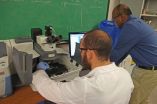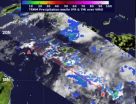(Press-News.org) Most liver transplant candidates who died or were removed from the transplant list actually received one or more liver donation offers, according to a recent UCSF study.
"What we found challenges the simplistic view that transplant dynamics are driven simply by organ availability," said lead author, Jennifer Lai, MD, assistant clinical professor in the UCSF Division of Gastroenterology and Hepatology. "Efforts to reduce wait-list mortality must target all aspects of mismatch between supply and demand."
The research team analyzed data from 33,389 candidates listed in the United Network for Organ Sharing (UNOS)/Organ Procurement and Transplantation Network (OPTN) registry during the time frame of Feb. 1, 2005 to Jan. 31, 2010. Out of the candidates who had died or been delisted, 84 percent received one or more liver offers prior to death/delisting, indicating that they had an opportunity to undergo transplantation. Reasons for liver offer refusals were reported as donor quality/age or other donor-related factors, size compatibility or recipient readiness.
"Understanding the real-time factors involved in the decisions regarding liver transplant offers is vital to improving the wait-list process," said senior author, John Roberts, MD, professor of surgery and chief of the UCSF Division of Transplantation. "While some of the factors are beyond control, others can be managed."
Simply increasing the availability of deceased donor livers or the number of offers may not necessarily reduce wait-list mortality, according to the study. Instead, the study suggests that efforts must be made to understand multiple factors involving candidates, donors and transplant centers to help influence what is often a complex and dynamic decision to accept or decline a liver offer.
More specifically, the study recommends that wait-list candidates efficiently complete their pre-transplant evaluations so they are ready for liver offers as soon as possible. Patients with a Model of End-stage Liver Disease (MELD) score of 15 or higher also should be thoroughly educated about the survival benefit of transplantation with any liver graft, as opposed to continued waiting. The MELD is a scoring system for assessing the severity of chronic liver disease and is used by UNOS for prioritizing allocation of liver transplants.
The team also suggests improving efforts within the transplant community to reduce the stigma associated with non-ideal livers and setting realistic expectations for wait-listed candidates regarding the available donor organs.
"The decision to accept a liver offer is not just about minimizing complications after transplant, but about reducing the unpredictability of death before transplant," Lai said.
INFORMATION:
Sandy Feng, MD, PhD, professor of surgery in the UCSF Division of Transplant Surgery and director of the UCSF Abdominal Transplant Fellowship Program, is a co-author.
Funding for this research was provided by the National Institute of Diabetes and Digestive and Kidney Diseases and the UCSF Liver Center. The paper was published in the leading journal in its field, Gastroenterology.
Recognized as a world leader in organ transplantation since 1964, the UCSF Organ Transplant Service has performed transplants for more than 10,000 patients and has played a key role in defining the field. The UCSF Liver Transplant Program, designated as a "Center of Excellence" by the U.S. Department of Health and Human Services performs more liver transplants than any other hospital in Northern California – over 2,300 liver transplants for adults and children since it began in 1988.
UCSF is a leading university dedicated to promoting health worldwide through advanced biomedical research, graduate-level education in the life sciences and health professions, and excellence in patient care.
Follow UCSF
UCSF.edu | Facebook.com/ucsf | Twitter.com/ucsf | YouTube.com/ucsf
Most liver transplant candidates receive donation offers
UCSF study finds transplant wait-list deaths are not just due to organ availability
2012-10-23
ELSE PRESS RELEASES FROM THIS DATE:
TV, devices in kids' bedrooms linked to poor sleep, obesity
2012-10-23
(Edmonton) Children who bask in the nighttime glow of a TV or computer don't get enough rest and suffer from poor lifestyle habits, new research from the University of Alberta has shown.
A provincewide survey of Grade 5 students in Alberta showed that as little as one hour of additional sleep decreased the odds of being overweight or obese by 28 per cent and 30 per cent, respectively. Children with one or more electronic devices in the bedroom—TVs, computers, video games and cellphones—were also far more likely to be overweight or obese.
"If you want your kids to sleep ...
Exercise and complete decongestive therapy best ways to manage lymphedema, MU expert says
2012-10-23
COLUMBIA, Mo. –Nearly 40 percent of breast cancer survivors suffer from lymphedema, a chronic condition that causes body limbs to swell from fluid buildup, as a result of lymph node removal and radiation therapy. A cure for lymphedema does not exist, so individuals with the condition must find ways to manage the symptoms throughout their lifetimes. Now, a team of researchers and clinicians working with a University of Missouri lymphedema expert has found that full-body exercise and complete decongestive therapy (CDT) are the best ways for patients to minimize their symptoms ...
Climate variability and conflict risk in East Africa measured by Boulder team
2012-10-23
While a new study led by the University of Colorado Boulder shows the risk of human conflict in East Africa increases somewhat with hotter temperatures and drops a bit with higher precipitation, it concludes that socioeconomic, political and geographic factors play a much more substantial role than climate change.
According to CU-Boulder geography Professor John O'Loughlin, the new CU-Boulder study undertaken with the National Center for Atmospheric Research in Boulder is an attempt to clarify the often-contradictory debate on whether climate change is affecting armed ...
Evolution of new genes captured
2012-10-23
Like job-seekers searching for a new position, living things sometimes have to pick up a new skill if they are going to succeed. Researchers from the University of California, Davis, and Uppsala University, Sweden, have shown for the first time how living organisms do this.
The observation, published Oct. 19 in the journal Science, closes an important gap in the theory of natural selection.
Scientists have long wondered how living things evolve new functions from a limited set of genes. One popular explanation is that genes duplicate by accident; the duplicate undergoes ...
Rapid changes in the Earth's core: The magnetic field and gravity from a satellite perspective
2012-10-23
Annual to decadal changes in the earth's magnetic field in a region that stretches from the Atlantic to the Indian Ocean have a close relationship with variations of gravity in this area. From this it can be concluded that outer core processes are reflected in gravity data. This is the result presented by a German-French group of geophysicists in the latest issue of PNAS (Proceedings of the National Academy of Sciences of the United States).
The main field of the Earth's magnetic field is generated by flows of liquid iron in the outer core. The Earth's magnetic field protects ...
New Stanford analysis provides fuller picture of human expansion from Africa
2012-10-23
A new, comprehensive review of humans' anthropological and genetic records gives the most up-to-date story of the "Out of Africa" expansion that occurred about 45,000 to 60,000 years ago.
This expansion, detailed by three Stanford geneticists, had a dramatic effect on human genetic diversity, which persists in present-day populations. As a small group of modern humans migrated out of Africa into Eurasia and the Americas, their genetic diversity was substantially reduced.
In studying these migrations, genomic projects haven't fully taken into account the rich archaeological ...
Milky Way's black hole getting ready for snack
2012-10-23
Get ready for a fascinating eating experience in the center of our galaxy.
The event involves a black hole that may devour much of an approaching cloud of dust and gas known as G2.
A supercomputer simulation prepared by two Lab physicists and a former postdoc suggests that some of G2 will survive, although its surviving mass will be torn apart, leaving it with a different shape and questionable fate.
The findings are the work of computational physicist Peter Anninos and astrophysicist Stephen Murray, both of AX division within the Weapons and Complex Integration Directorate ...
New self-healing coating for aluminum developed to replace cancer-causing product
2012-10-23
RENO, Nev. – A research team at the University of Nevada, Reno has developed a new environmentally-friendly coating for aluminum to replace the carcinogenic chromate coatings used in aerospace applications. The chromate conversion coatings have been used for more than 50 years to protect aluminum from corrosion.
The team presented their research last week at the international Pacific Rim Meeting on Electrochemical and Solid-State Science in Hawaii.
"It was well received at the conference," Dev Chidambaram, lead scientist and assistant professor of materials science ...
NASA sees 18th Atlantic depression form
2012-10-23
Tropical Depression 18 (TD18) formed over the southwestern Caribbean Sea at 11 a.m. EDT on Oct. 22, and NASA's TRMM satellite saw a "hot towering" thunderstorm near its center of circulation hinting that it could become a tropical storm soon. A tropical storm watch has been issued for Jamaica.
When NASA's Tropical Rainfall Measuring Mission (TRMM) satellite flew over the developing TD18 early on Oct. 22 at 0040 UTC (Oct. 21 at 8:40 p.m. EDT), the satellite measured rainfall rates within the low pressure area and measured cloud heights of the thunderstorms that make up ...
Additive restores antibiotic effectiveness against MRSA
2012-10-23
Researchers from North Carolina State University have increased the potency of a compound that reactivates antibiotics against methicillin-resistant Staphylococcus aureus (MRSA), an antibiotic-resistant form of Staphylococcus that is notoriously difficult to treat. Their improved compound removes the bacteria's antibiotic resistance and allows the antibiotic to once again become effective at normal dosage levels.
NC State chemist Christian Melander had previously proven the effectiveness of a 2-aminoimidazole compound in reactivating antibiotics against resistant bacterial ...
LAST 30 PRESS RELEASES:
Sports injuries sustained during your period might be more severe
World's first successful 2 Tbit/s free-space optical communication using small optical terminals mountable on satellites and HAPS
Can intimate relationships affect your heart? New study says ‘yes’
Scalable and healable gradient textiles for multi‑scenario radiative cooling via bicomponent blow spinning
Research shows informed traders never let a good climate crisis go to waste
Intelligent XGBoost framework enhances asphalt pavement skid resistance assessment
Dual-function biomaterials for postoperative osteosarcoma: Tumor suppression and bone regeneration
New framework reveals where transport emissions concentrate in Singapore
NTP-enhanced lattice oxygen activation in Ce-Co catalysts for low-temperature soot combustion
Synergistic interface engineering in Cu-Zn-Ce catalysts for efficient CO2 hydrogenation to methanol
COVID-19 leaves a lasting mark on the human brain
Scientists use ultrasound to soften and treat cancer tumors without damaging healthy tissue
Community swimming program for Black youth boosts skills, sense of belonging, study finds
Specific depressive symptoms in midlife linked to increased dementia risk
An ‘illuminating’ design sheds light on cholesterol
Who is more likely to get long COVID?
Study showcases resilience and rapid growth of “living rocks”
Naval Research Lab diver earns Office of Naval Research 2025 Sailor of the Year
New Mayo-led study establishes practical definition for rapidly progressive dementia
Fossil fuel industry’s “climate false solutions” reinforce its power and aggravate environmental injustice
Researchers reveal bias in a widely used measure of algorithm performance
Alcohol causes cancer. A study from IOCB Prague confirms damage to DNA and shows how cells defend against it
Hidden viruses in wastewater treatment may shape public health risks, study finds
Unlock the power of nature: how biomass can transform climate mitigation
Biochar reshapes hidden soil microbes that capture carbon dioxide in farmland
Reducing saturated fat intake shows mortality benefit, but only in high-risk individuals
Manta rays create mobile ecosystems, study finds
Study: Mixed results in using lipoic acid to treat progressive multiple sclerosis
Norbert Holtkamp appointed director of Fermi National Accelerator Laboratory
New agentic AI platform accelerates advanced optics design
[Press-News.org] Most liver transplant candidates receive donation offersUCSF study finds transplant wait-list deaths are not just due to organ availability


